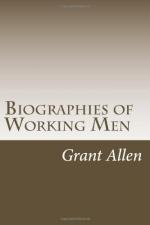The line was a difficult one to construct; but George Stephenson set about it with the skill and knowledge acquired during many years of slow experience; and he performed it with distinguished success. He was now forty-four; and he had had more to do with the laying down of rails than any other man then living. The great difficulty of the Liverpool and Manchester line lay in the fact that it had to traverse a vast shaking bog or morass, Chat Moss, which the best engineers had emphatically declared it would be impossible to cross. George Stephenson, however, had a plan for making the impossible possible. He simply floated his line on a broad bottom, like a ship, on the top of the quaking quagmire; and proceeded to lay down his rails on this seemingly fragile support without further scruple. It answered admirably, and still answers to the present day. The other works on the railway, especially the cuttings, were such as might well have appalled the boldest heart in those experimental ages of railway enterprise. It is easy enough for us now to undertake tunnelling great hills or filling up wide valleys with long ranges of viaduct, because the thing has been done so often, and the prospect of earning a fair return on the money sunk can be calculated with so high a degree of reasonable probability. But it required no little faith for George Stephenson and his backers to drive a level road, for the first time, through solid rocks and over trembling morasses, the whole way from Liverpool to Manchester. He persevered, however, and in 1830, after four years’ toilsome and ceaseless labour, during which he had worked far-harder than the sturdiest navvy on the line, his railway was finally opened for regular traffic.
Before the completion of the railway, George Stephenson had taken part in a great contest for the best locomotive at Liverpool, a prize of 500 pounds having been offered by the company to the successful competitor. Stephenson sent in his improved model, the Rocket, constructed after plans of his own and his son Robert’s, and it gained the prize against all its rivals, travelling at what was then considered the incredible rate of 35 miles an hour. It was thus satisfactorily settled that the locomotive was the best power for drawing carriages on railways, and George Stephenson’s long battle was thus at last practically won.
The opening of the Liverpool and Manchester railway was an era in the history of the world. From the moment that great undertaking was complete, there could no longer be any doubt about the utility and desirability of railways, and all opposition died away almost at once. New lines began immediately to be laid out, and in an incredibly short time the face of England was scarred by the main trunks in that network of iron roads with which its whole surface is now so closely covered. The enormous development of the railway system benefited the Stephenson family in more than one way. Robert Stephenson became the engineer of the vast series of lines now known as the London and North Western; and the increased demand for locomotives caused George Stephenson’s small factory at Newcastle to blossom out suddenly into an immense and flourishing manufacturing concern.




